Nick Leviton, Shields’ Chief Procurement Officer, on the state of the telecoms supply chain, and where the best opportunities lie for networks to cut costs and improve ESG within procurement.
1. When and why did you start working with Shields, and what makes you stick around?
I joined Shields back in 2020, and I’ve stuck around since because of the culture and approach to the circular economy. I’m delighted to be part of the team!
2. How are you working with our suppliers to improve their sales and meet network needs?
Our supplier partnerships have been key to Shields’ depth of stock and the ability to meet our operator clients’ needs and demands. By helping our key suppliers to develop their own quality protocols in line with Shields’, we’re facilitating our suppliers to improve their own sales across the sector too. Everybody wins.
3. What challenges have affected supply chains in the last few years, and can we expect more of the same or is change on the horizon?
Sadly, with the recent conflicts around the world and general unease we’ve seen, market supply has fallen at the same time as costs have risen, and this will continue in the short term.
We’re working hard with our key suppliers to manage supply from reputable sources, thereby ensuring quality, supply and pricing stability – and so far it’s working, with the average cost of a part bought through GSMA Equipment Marketplace rather than directly from the OEM creating a substantial saving.
4. How can networks protect themselves against future supply chain issues?
It requires a bit of a mental shift, but the solution is genuinely quite simple. By keeping an open mind on the reuse of hardware and switching to sourcing more used equipment from the market, operators can work with Shields to allow a control of asset management, moving surplus hardware on and acquiring required equipment in exchange. As a result, they’re less affected by unpredictable issues in the supply chain, get more clarity on their global inventories and take control of generating previously untapped revenues.
5. How are sustainability and the reuse of resources influencing our decision-making process and product lifecycle management?
All businesses now have a clear goal with regards ESG and meeting climate guidelines. Sustainability isn’t just a buzz word but a requirement, driving focus within Procurement Departments. Targets are now clearly set to reduce networks’ carbon footprints, and that sits at the top of any RFQ/RFP, with pricing now falling further down the list of key requirements.
New mandates like the Corporate Sustainability Reporting Directive mean that tracking sustainability isn’t just important either; it’s crucial. That’s why we’re always looking for ways to help networks meet those requirements. Find out more about that here.
6. As a C-level executive, how do you plan to ensure that our purchasing strategy aligns with the overall goals and objectives of our company?
My focus remains on the circular economy; reuse and recycle where possible, keeping ESG at the forefront of all Procurement decisions. We want networks to feel confident tapping into our supply chain, not just to help them meet their own targets, but for the greater good of the planet.
7. What are your predictions for the major shifts or breakthroughs in our industry in the next five years?
I believe that the industry will continue to move closer together, working closely to ensure the environmental impact is reduced, while at the same time improving global communications and connecting all parts of the world. Bring on 6G!
8. What opportunities should networks embrace when it comes to fostering/creating supplier relationships?
Don’t simply chase the lowest price, it’s just not the answer. The lowest cost is normally hand-in-glove with the lowest quality, which then leads to poor service and the failure to deliver.
Pursue the highest quality and develop the partnership to enhance both sides of the working relationship. Don’t overlook renewed equipment either; it’s the simplest, most cost-effective and most reliable route to procuring that highest quality kit.
9. How is our approach to customer service evolving in response to new technologies and customer expectations?
Shields remains proactive in its approach to customer service. We’re developing our internal sales support team to not only support but develop the Shields/Client relationship, as well as ensure we have the right team with the right industry knowledge, able to support and deliver at every opportunity.
At the same time, we’re developing our own systems, like GSMA Equipment Marketplace, which gives networks a transparent view of their entire group’s inventory, no matter where stock is globally. Getting to grips with innovative systems like this one can take a bit of getting used to, but our team are always available to hold your hand through the process.
10. What steps are we taking to ensure that customer insights and feedback directly influence our strategic decisions?
Working with client feedback has allowed us to take the next steps with both our GSMA Equipment Marketplace Platform and our Vendor Portal. As a result, we’re streamlining our operations and delivering a unique service that is second to none within the Telecoms Sector.
To demo GSMA Equipment Marketplace and find out how other networks are cutting procurement costs, reducing lead times AND increasing product longevity – click HERE.
11. What take aways from your time in the Royal Navy did you carry over to Shields?
Working in Defence Procurement within the Royal Navy allowed me to understand the power of negotiation as well as the need to understand that simply securing the lowest cost was not always the best option.
Levels of service are key within any working partnership, and that’s has held me in good stead ever since. Sadly, I never managed to meet the Queen in person, although I did receive a glare from the Duke of Edinburgh once!
ABOUT MARKETPLACE
GSMA Equipment Marketplace is proving pivotal in helping networks get full visibility on their global asset inventories, giving them the opportunity to source from with their own networks and reduce their costs and carbon footprint. We’re helping procurement teams meet ESG targets, generate previously untapped recycling revenues and improve reliability across the board. If you’d like to know more about revolutionising your network’s asset management, book a demo now!

